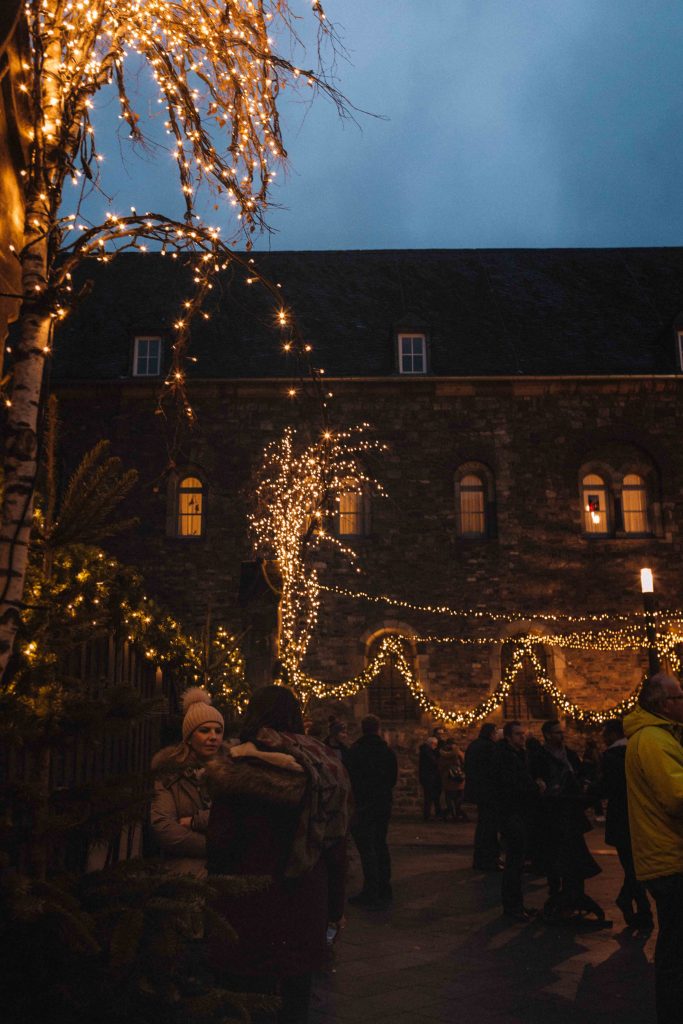A Complete Guide to Aachen’s Christmas Markets
When we landed in Cologne for a long weekend exploring two of Germany’s best festive destinations -the Aachen Christmas Market and the picturesque Monschau Christmas Market – we were ready for all the Glühwein, roasted chestnuts and Christmas-market shopping that this area of Germany could throw at us.
But what we discovered was far more special.
The Aachen Christmas Markets turned out to be perhaps the most beautiful Christmas markets we’ve ever visited.
Set within a historic city built on thermal springs and centred around a breathtaking UNESCO-listed cathedral, Aachen offers a perfect blend of festive charm and history.
Whether you’re visiting for the food, the traditional stalls or the magical atmosphere, this guide covers everything you need to plan an unforgettable trip to the Aachen Christmas Markets.
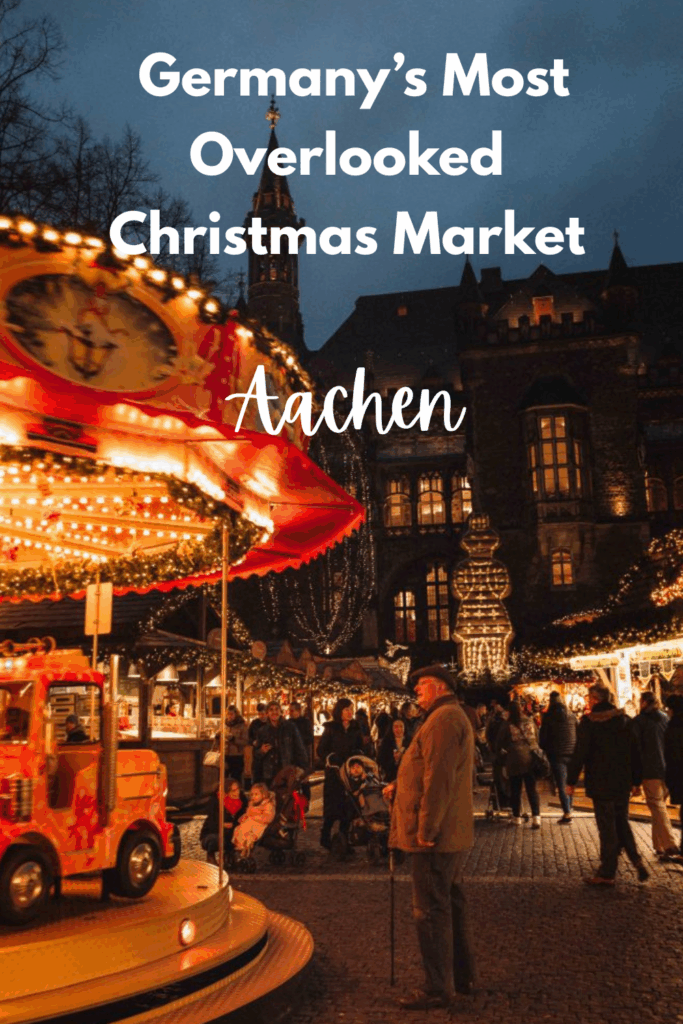
Where is Aachen?
Aachen is tucked into Germany’s western corner, where the country meets Belgium and the Netherlands.
Its borderland location means it’s actually surprisingly easy to reach from nearby European cities, making it an ideal stop for anyone planning on visiting multiple Christmas Markets.
When & Where: Aachen Christmas Market 2025
So, when are the Aachen Christmas markets happening in 2025?
The Aachen Christmas Market runs from 21 November to 23 December 2025. Typical opening hours are 11am – 9pm daily, though on 23 November (Totensonntag), it opens later, from about 6pm.
As usual, the market is spread across several festive squares in Aachen’s old town, including around the historic Cathedral (Dom) and the Town Hall (Rathaus).
How to Get to Aachen Christmas Markets from the UK
By Plane
We flew from London Heathrow to Cologne, which took about an hour. From Cologne, hopping in a rental car made the most sense to us. From Cologne airport, it’s only about a 40-minute drive on the autobahn to Aachen (all very straightforward).
By Train
If you prefer not to drive, you can take a train: Eurostar to Brussels, then a regional service to Aachen. It’s actually a pretty easy journey and very relaxing (we love the Eurostar).
Direct Eurostar and Deutsche Bahn services run from Brussels-Midi to Aachen Hauptbahnhof, with journey times of around 1 hour.
Tickets typically cost €14–€55 depending on how far in advance you book, making it one of the fastest and most convenient ways to reach the Aachen Christmas Markets from Belgium.
Driving & Parking Aachen Christmas Markets
If you want to drive to Aachen Christmas Markets, there are Park & Ride (P+R) options that let you park outside the city and take a shuttle or bus to the Christmas Market. The P and R ticket costs €5 (for up to 5 people, return trip included), which is a bargain.
The two we’d recommend are P+R Tivoli (Krefelder Straße) and P+R Westfriedhof (Vaalser Straße).
If you’re driving into the centre, Parkhaus am Dom is one of the closest parking garages (this is where we parked). Admittedly, it isn’t cheap – €2.50 per hour, with a maximum day rate of €17.50 and the spaces did feel very tight. With retrospect, we probably should have just done the park and ride.
Best Place to Stay When Visiting Aachen Christmas Market
When we visited Aachen Christmas Markets, our home away from home was the Aachen Innside hotel, which was just a short ten minute walk from the city’s historic centre.
Offering a great rooftop restaurant with views across the city’s spires, this was the ideal hotel to base ourselves whilst exploring Aachen. With prices sitting at around £110 a night, it’s also pretty reasonably priced.
For other hotel recommendations whilst in the city, take a look here.
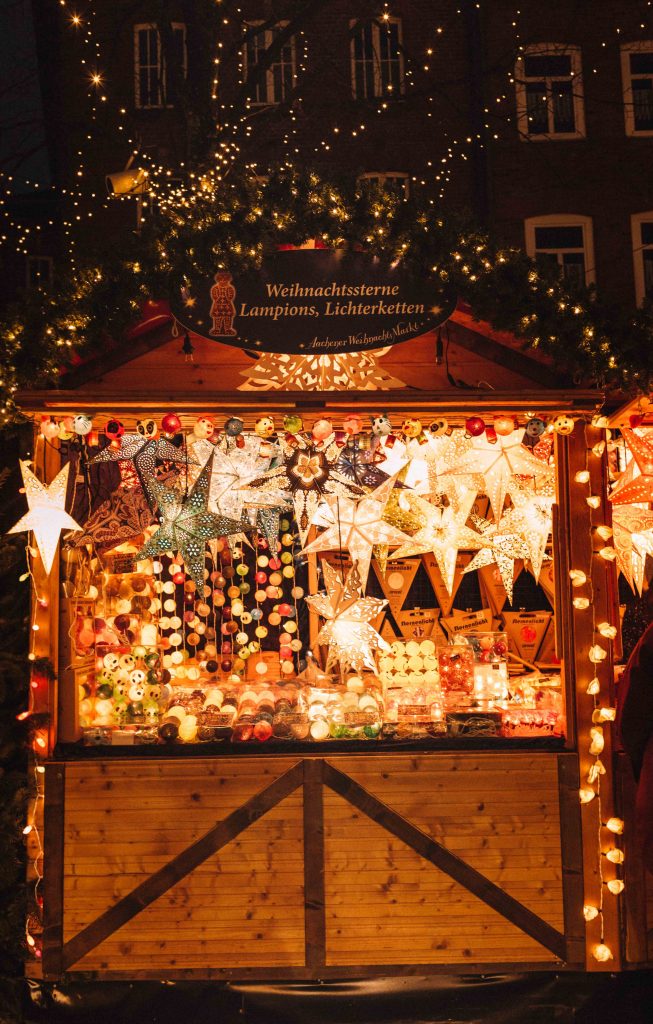
Things to do When Visiting Aachen Christmas Markets
1. Immerse Yourself in the Magic of the Christmas Markets
The Aachen Christmas Market, one of Germany’s prettiest festive events, runs every year from 23 November to 23 December.
With its glittering fairy lights, simple wooden stalls and festive music echoing through its historic streets, the markets are a true winter wonderland – and a must-visit for anyone exploring Christmas markets in Germany.
Regularly appearing in lists of the top 10 Christmas markets in Europe, Aachen is often considered a benchmark for an authentic Christmas market experience.
During our own visit, what – in our opinion – set Aachen Christmas Market apart was its dedication to local, high-quality products.
The stalls were overflowing with (genuinely) unique Christmas gifts, from handcrafted ornaments to intricately carved wooden puzzles, making them a refreshing alternative to the more commercialised markets found elsewhere (I’m looking at you, England).
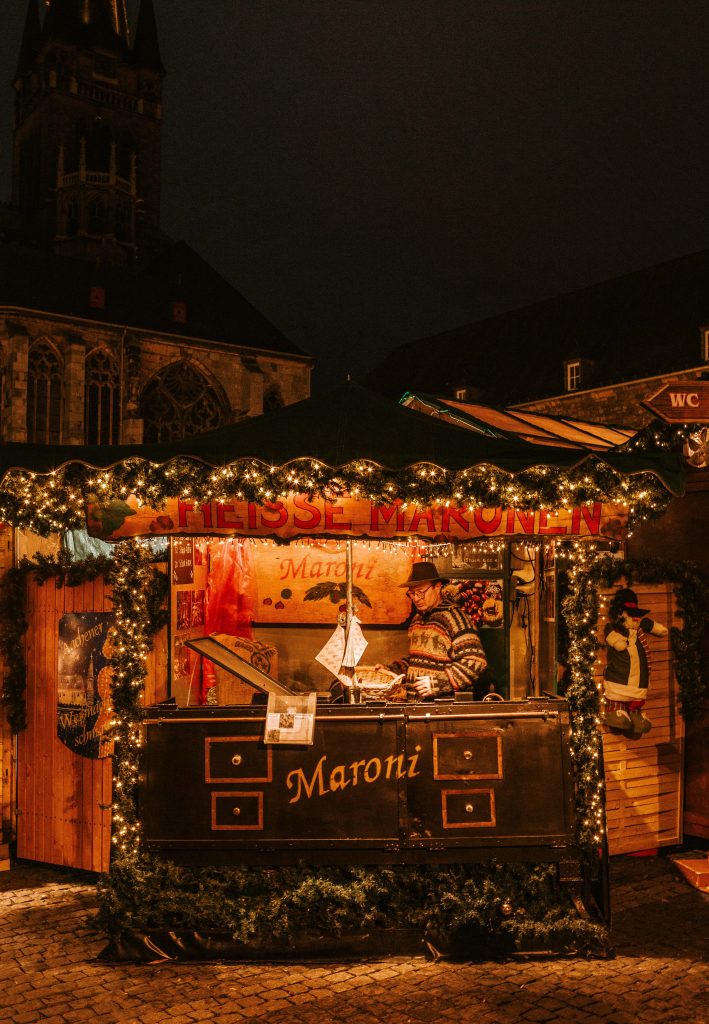
Whether you’re looking for traditional souvenirs or one-of-a-kind treasures, Aachen is the perfect place to find something special.
Weaving through the cobbled lanes surrounding the Aachen Cathedral (Dom) and the Town Hall (Rathaus), we explored the markets slowly and at our own pace. One of our favourite experiences was simply wandering these sparkling streets while munching on Germany’s traditional ‘reibekuchen’ (fried potato pancakes) which were ten out of ten delicious.
Of course, no visit would be complete without sampling traditional German cuisine and Glühwein (mulled wine). At Oecher Glühwein-Treff, we enjoyed a tasting experience that showcased both classic red grape mulled wine and an unexpected white wine Glühwein – which we thought was actually better than the traditional variety.
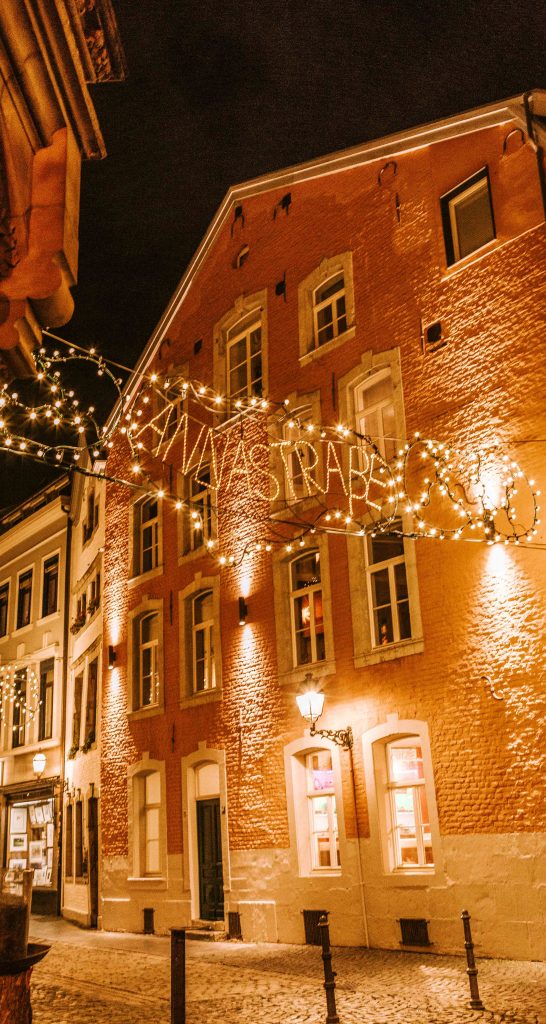
2. Visit Aachen’s Famous Historic Spas
“Aachen is a place defined by water,” our tour guide said as we began our guided tour of the city.
Aachen (or Bad Aachen, literally meaning ‘Spa Aachen’) derives its name from the old German word for ‘river’, or the Latin term for aqua.
Far from being a recent discovery, Aachen’s 30 sulphurous natural springs were discovered and valued by both the Celts and the Romans. In fact, these healing waters were the very reason that Emperor Charlemagne chose to build his palace here. It’s a grand history for a city that often flies under the tourist radar.
With its toasty 47°C springs pumping out 3.5 million litres of mineral-rich water daily, Aachen is an ideal destination for a luxurious spa escape. After a few blustery days exploring its Christmas markets, we revived our frozen limbs with a dip in the famed thermal waters of Carolus Thermen.
Connected to the spring Rosenquelle, Carolus Thermen boasts expansive indoor and outdoor areas, including eight pools, a unique ‘sauna world’, on-site restaurants and indulgent pampering treatments.
We were fortunate enough to be gifted the Pamper Package Thermal Plus for the day (€59 per person), which included a heavenly 30-minute massage and a delicious lunch at the spa. As the rain poured (after all, this is the city of water), we floated from the warm indoor pool to the outdoor one, breathing in the cold winter’s air.
After several busy days exploring Aachen and its festive markets, a visit to Carolus Thermen offered the perfect restorative break. We even made a mental note to return with friends, as Aachen provides a brilliant alternative to the usual UK spa destinations, or indeed – the now viral giant thermal spa in Bucharest.
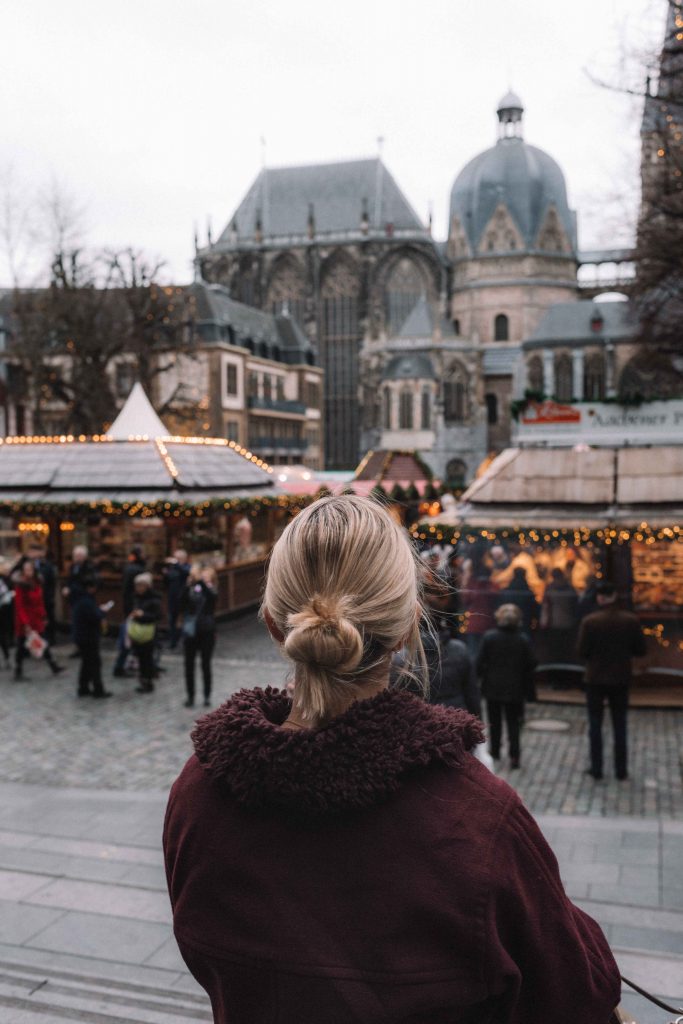
3. Visit Aachen’s Beautiful Cathedral
Known as Cathedral of Aix-la-Chapelle, Aachen’s Cathedral is home to a mind-bogglingly rich past.
Erected by Emperor Charlemagne 2,000 years ago, it remains an important modern-day pilgrimage site. Said to be one of the oldest in Europe, Aachen’s Cathedral has witnessed more history than most, beginning with the construction of Charlemagne’s Palantine Chapel in the year 796.
Now forming part of the larger building (the Cathedral was enlarged in the Middle Ages), the Palantine Chapel is the nucleus of the Cathedral. After Charlemagne was buried at the site in 814, the Cathedral continued to play an important role in Germany’s history; witnessing the coronation of thirty-one German Kings and twelve Queens.
Stepping inside the Cathedral, the winter sun dipping behind the city’s spires, we were met with flickering candlelight and a sparkling mosaic ceiling.
Glittering spectacularly, the ceiling shimmered thanks to the 32 million pieces of mosaic covering it, all of which were added after Charlemagne’s death.
Legend dictates that local ‘Aacheners’ ran out of money whilst building the church (now Cathedral), having spent Charlemagne’s money on festivities. Anxious to have the Cathedral completed upon his return, locals made a pact with a well-clothed man (i.e. a devil) who had mysteriously appeared in the city.
Flippantly, the locals agreed that in return for money, the devil would receive the first soul of whoever entered the Cathedral. Realising the error of their ways once the deal was sealed, Aacheners began to plot a way to fool the devil.
Capturing a wolf from the forest, they opened the doors of the Cathedral and threw the poor beast in. Snatching the soul of the wolf, the devil realised he had been duped and flew into a rage.
Storming out of the Cathedral, he slammed its doors with such force that it caught his thumb; splintering the door in the process.
The curious ‘thumb’ mark can (apparently) still be felt today, inside the bronze handle of the door, along with a large, jagged crack. Mesmerised by this legend, we stood in the inky darkness of the Aachen night, cautiously touching the alleged thumb print of the devil.
Boasting so much history, we would definitely recommend a trip to Aachen Cathedral and to take its ‘Treasury Tour’, which can be booked here.
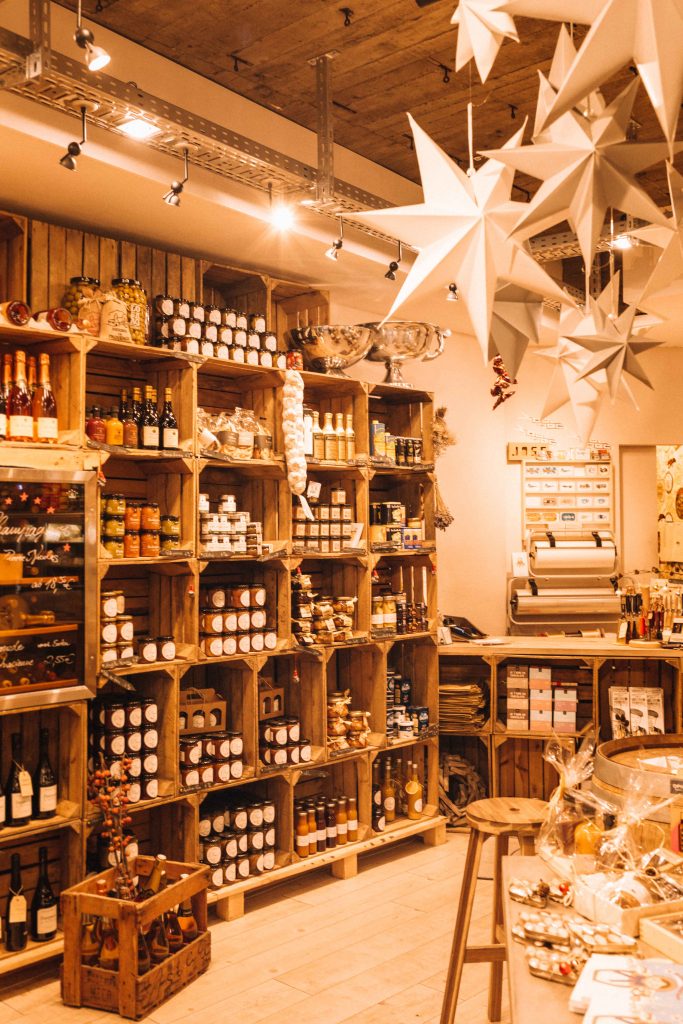
4. Take a Food Tour In Aachen
One of the best things to do in Aachen is to explore its vibrant food scene – and there’s no better way than with a food tour hosted by Eat The World (starting at €44 per person).
The Aachen Old Town Food Tour is a delicious way to uncover the city’s culture, history and hidden culinary gems over a three-hour tasting adventure.
Guided by Tim, we wandered through the cobbled streets of Aachen, hopping from a sushi restaurant to a traditional tea house, then to a French-inspired delicatessen and even a craft brewery.
To keep the magic intact for future travellers, we won’t spoil all the stops – but suffice to say, the combination of tasting and storytelling made it one of our favourite afternoons in the city.
Of course, no visit to Aachen – or the Aachen Christmas Market – would be complete without sampling the city’s famous Aachener Printen biscuits.
A version of the German Lebkuchen, Printen have been baked in Aachen for over 1,000 years, thought to have originated in Belgium. Made from dark flour, sugar and exotic spices (the full recipe remains a closely guarded secret), they’re a must-try for any festive visitor.
We visited Nobis Printen Bakery, arguably the best spot in Aachen to pick up these iconic biscuits. With packets of gleaming Printen lining the walls, it was impossible not to want to try every variety.
After sampling several during our food tour, we can confidently say they are all equally delicious.
For a calmer experience away from the bustling Aachen Christmas Market, we also stopped at Aachen’s oldest café, Van den Daele. Established in 1655 by joining four timbered houses, it’s a warren of small rooms and crooked staircases.
We claimed a cosy corner beside an original stained-glass window and treated ourselves to cake and steaming mugs of hot chocolate. It was super cosy and a lovely way to relax in the busy city.





